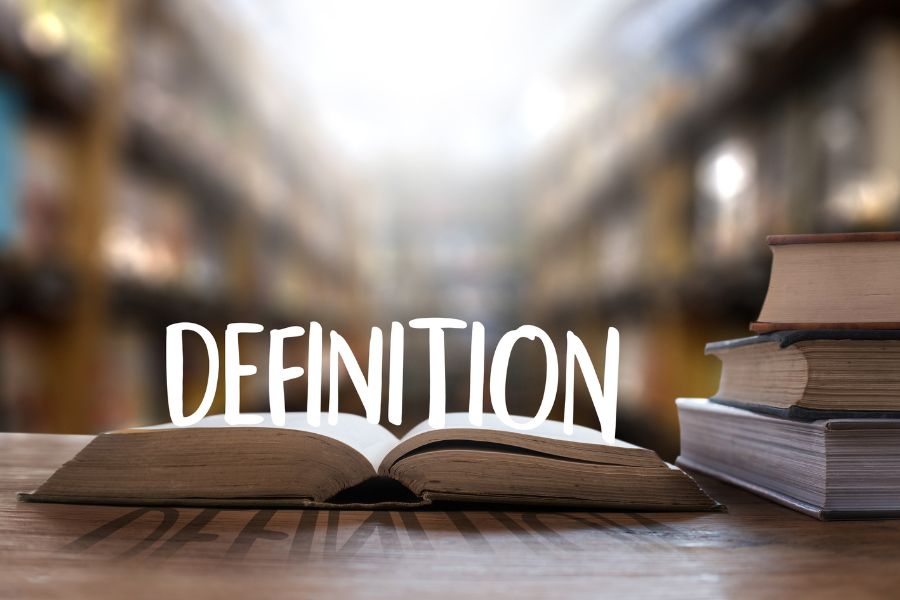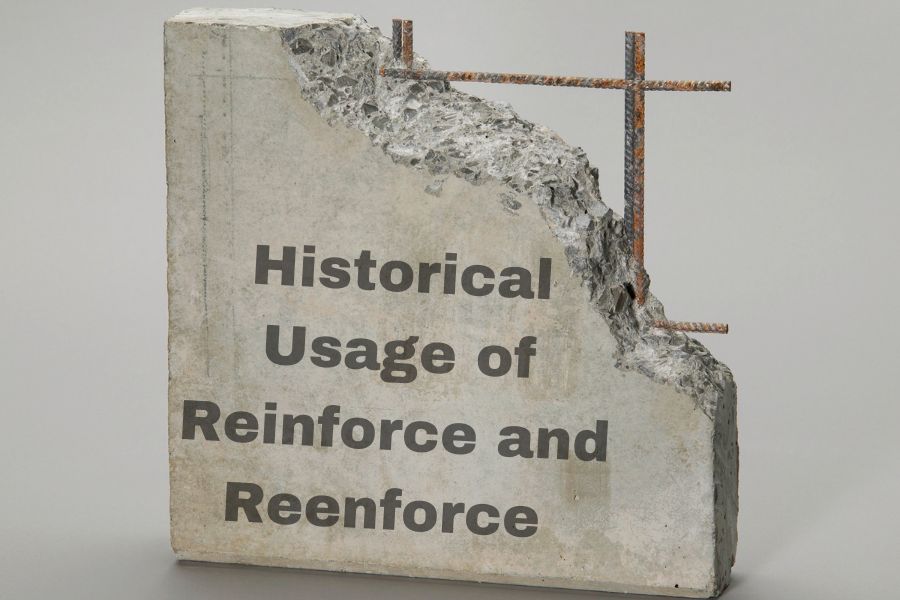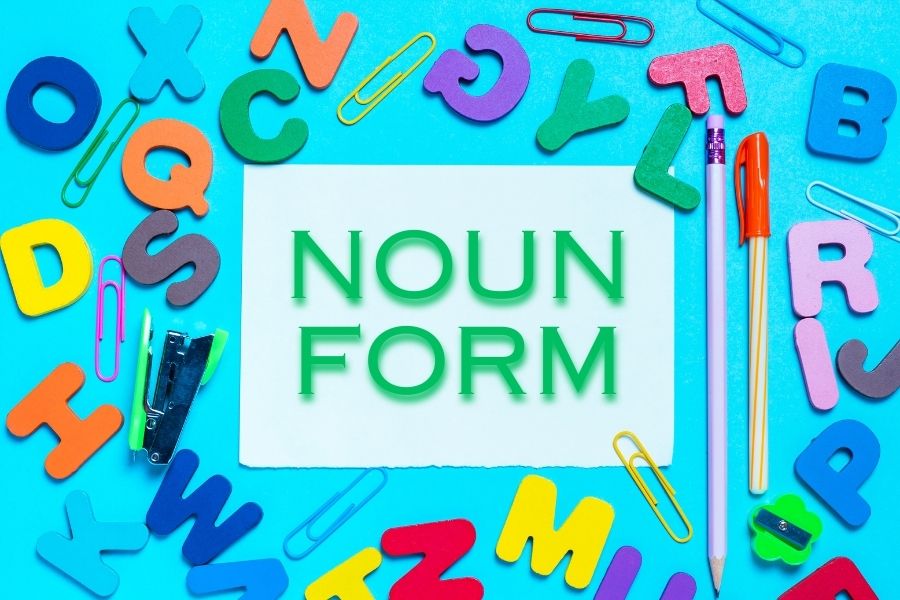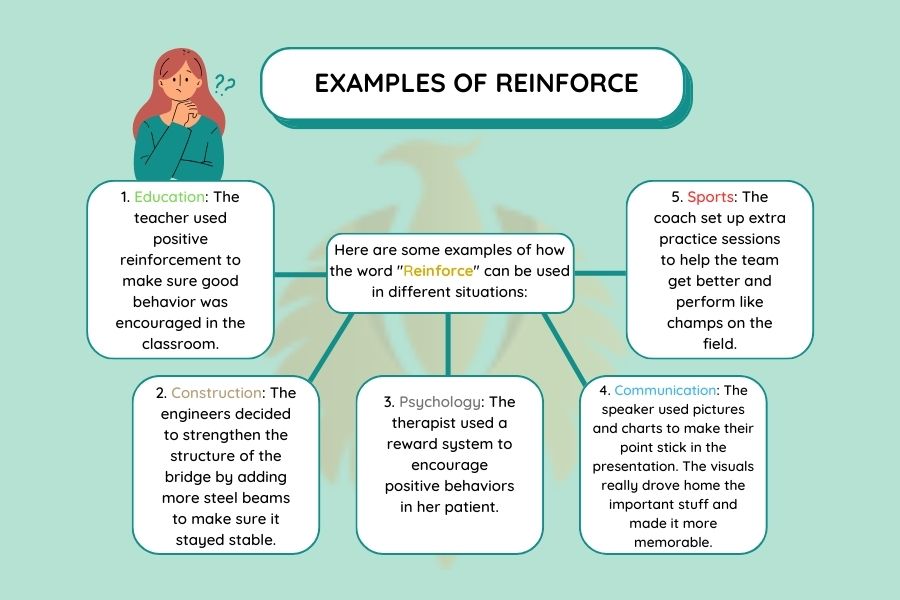To begin addressing the title at hand, “reinforce” is the correct term commonly used in the English language, which means to strengthen, support, or enhance an idea, structure, or concept.
In contrast, “reenforce” is often regarded as an incorrect variant, likely stemming from a confusion with the former term.
In this article, we will explore ten specific differences between “reinforce” and “reenforce,” providing examples that clarify their respective uses and the misconceptions surrounding them.

Now, let’s delve into the importance of understanding these terms in greater depth. Language isn’t just a tool for communication; it’s a reflection of our thoughts and our ability to convey them accurately.
In a world where precision is crucial—whether in academics, business, or social interactions—distinguishing between similarly sounding words can significantly impact the effectiveness of our communication.
The term “reinforce” plays a vital role across various fields, such as education, psychology, construction, and more, illustrating its adaptability and relevance in different contexts.
For instance, educators use reinforcement techniques to promote positive behavior in students, while engineers might discuss the reinforcement of beams to ensure structural integrity.
Understanding how to use “reinforce” correctly not only enhances one’s writing but also enriches verbal exchanges, leading to clearer and more persuasive arguments.
On the other hand, “reenforce” as a term typically does not exist in formal dictionaries, raising questions about its legitimacy and the implications of using incorrect language in communication.
The absence of a recognized definition for “reenforce” underscores the necessity of distinguishing between these terms, ensuring that our language remains coherent and impactful.
Throughout this article, we aim to equip you with the knowledge to navigate these linguistic waters with confidence.
We will explore definitions, contexts, and illustrative examples that demonstrate how “reinforce” is employed correctly while shedding light on the common pitfalls associated with the misusage of “reenforce.”
By the end, you will not only grasp the ten differences between these two terms but also appreciate the broader scope of language and its power in effectively conveying meaning.
Join us as we embark on this enlightening journey, sharpening your linguistic skills for both personal and professional growth.
You might also enjoy:Which of the Following: Definition + Complete Usage + Grammar
which one is right – Reinforce or Reenforce? What’s the main answer?

The right way to spell it is “reinforce.” “Reinforce” means to make something stronger or back it up, usually by doing more stuff.
People often use it to talk about making a building stronger, making a behavior stick, or making an idea more solid.
Most people don’t know or accept the spelling “reenforce” as the right way to spell this word. So, “reinforce” is the main and correct answer.
You Might Also Enjoy:Reinforce Vs Reenforce: 10 Differences + Examples [2025]
1. Spelling of Reinforce and Reenforce:

The word “reinforce” is spelled right. It’s super important to use the right spelling so people can understand what you’re saying and keep things clear in writing.
So let’s talk about “reinforce” and “reenforce” and give some examples to show how they’re used in different situations.
“Reinforce” is a verb that means to make something stronger or give it more support, usually by doing extra stuff or taking extra actions.
People use it a lot in construction, education, sports, and psychology.
In construction, the workers used steel beams to make the building’s foundation stronger.
This extra support made sure the structure was stable and would last a long time.
In school, a teacher might use rewards or praise to make sure students keep behaving well. That way, they encourage students to keep doing good things.
In sports, a coach might give the team more practice sessions to make their skills even better. This extra practice helps the players perform better and become even more skilled.
At work, a manager might put in place new rules to make sure everyone stays safe. These rules are there to remind and guide employees on how to follow safety procedures.
So, in psychology, a therapist might use cognitive-behavioral tricks to boost positive thoughts.
They basically tell clients to focus on the good stuff and question their negative thoughts, so they can get into healthier mental habits.
By the way, just so you know, the spelling “reenforce” isn’t really recognized or accepted as the right way to spell this word.
Sure, some people might use it or see it in certain texts, but it’s not the correct or widely accepted form.
So, it’s probably better to stick with “reinforce” if you want your writing to be consistent and accurate.
To sum it up, “reinforce” is the right way to spell it. It’s a word that means making something stronger or giving it support through extra measures or actions.
By using “reinforce” in your writing, you can totally get your point across and keep things clear.
Don’t forget to use examples like the ones given to show how “reinforce” can be used in different situations.
Definition of reinforce: To strengthen or support an idea, behavior, or physical structure.
Example: “The teacher used extra worksheets to reinforce the lesson.”
Definition of reenforce: A less common term primarily used in specific contexts, often interchangeable with “reinforce” informally but not standard.
Example: “They decided to reenforce their commitment to community service.”
Usage of reinforce: Commonly used in both everyday and technical language.
Example: “The construction workers will reinforce the building’s foundation.”
Usage of reenforce: Rarely used and often considered incorrect in standard English.
Example: “We need to reenforce our safety measures” (commonly should be “reinforce”).
Context of reinforce: Often used in educational, psychological, military, and engineering contexts.
Example: “Positive feedback can reinforce desired behaviors in students.”
Context of reenforce: Generally used in informal or non-standard contexts, not widely accepted in formal writing.
Example: “The committee will reenforce the proposal’s importance” (correctly should be “reinforce”).
Reverb effects of reinforce: More impactful in discussions around policy changes or educational strategies.
Example: “The new laws aim to reinforce environmental protection efforts.”
Clarification of reenforce: Sometimes mistakenly understood as a synonym for reinforce without recognizing usage differences.
Example: “They want to reenforce the friendship” (ideally: “reinforce”).
Geographic variation: “Reinforce” is universally understood in English, while “reenforce” may vary in acceptance based on regional dialects.
Example: “Different architectural styles can reinforce cultural identity.”
Linguistic evolution: Language continues to evolve; “reenforce” may become more accepted informally, but this is not currently the norm.
Example: “Military exercises are designed to reinforce strategic alliances.”
Emphasis on learning: In educational settings, reinforce refers to providing additional support or review to enhance understanding.
Example: “Teachers often reinforce concepts through group discussions.”
Historical usage: Reinforce comes from older constructs in both military and engineering language, while reenforce lacks a clear historical trajectory.
Example: “Reinforce the walls to prevent damage during storms.”
Usage in academics: Reinforce is frequently used in academic writing to describe strengthening theories or arguments.
Example: “The research findings reinforce the initial hypothesis.”
Usage in emotional contexts: Reinforce is often applied in psychology to denote the strengthening of certain behaviors through rewards.
Example: “To reinforce positive behaviors, consistent feedback is essential.”
Visual reinforcement: Reinforce can also refer to using visual aids or materials to strengthen learning.
Example: “Charts and graphs can reinforce key concepts in presentations.”
Colloquial misunderstandings: Some may use reenforce when they mean reinforce, leading to confusion.
Example: “You need to reenforce the changes in the plan” (correctly: “reinforce”).
Occupational relevance: “Reinforce” is frequently used in professional jargon, especially in industries like construction and education.
Example: “Safety regulations reinforce proper workplace behavior.”
Common phrases: Reinforce is used in many established phrases and idioms.
Example: “The rules serve to reinforce discipline among students.”
Detailed explanations: When teaching, educators often elaborate on how to reinforce knowledge, rather than dodge the subject with vague terms.
Example: “We must reinforce our lessons with practical examples.”
Feedback loops: Reinforce is crucial in discussions regarding feedback and improvement.
Example: “Coaches reinforce techniques through regular practice.”
Nuances in tone: Reinforce carries a more authoritative tone, whereas reenforce may feel informal and vague.
Example: “Certifications can reinforce an employee’s qualifications.”
Contextual adaptability: Reinforce adapts well to various contexts, from technical to casual.
Example: “They are working to reinforce their partnership with local businesses.”
Cultural significance: Reinforcing cultural practices is more widely discussed than reenforcing.
Example: “Programs that reinforce cultural heritage are important in education.”
Impact on behavior: Reinforce suggests an intentional action to support learning or behavior change.
Example: “Extracurricular activities reinforce teamwork skills in students.”
Scientific applications: In scientific contexts, reinforcing hypothesis or theories is standard practice.
Example: “Experiment outcomes reinforce the theory of evolution.”
Missteps in usage: Using reenforce instead of reinforce can result in misunderstandings in professional communications.
Example: “We need to reenforce our analysis” (should be “reinforce”).
Emotional implications: Reinforce carries positive connotations when referring to support.
Example: “Friends can reinforce each other’s confidence.”
Causal relationships: Reinforce is often related to creating positive causal relationships in learning.
Example: “Reinforce good habits to promote a healthier lifestyle.”
Technical specifics: In engineering, reinforce has specific jargon usage.
Example: “They design beams to reinforce structural integrity.”
Audience awareness: When speaking to an audience, using reinforce ensures clarity and understanding.
Example: “To clarify the message, we need to reinforce the key points.”
Forum discussions: Using reinforce in online forums reinforces credibility versus using reenforce.
Example: “User agreements reinforce respect among community members.”
Marketing language: Reinforce is often employed in promotional materials to strengthen the brand message.
Example: “Advertising campaigns aim to reinforce brand identity.”
Teacher strategies: Educators use strategies that incorporate reinforcement to enhance student learning.
Example: “Interactive activities can reinforce learning outcomes.”
Non-standard usage brainstorming: Reenforce might appear in informal discussions or brainstorming sessions.
Example: “Let’s reenforce our ideas during the meeting.”
Psychological frameworks: Reinforce is deeply embedded in behavioral psychology frameworks regarding stimulus and response.
Example: “Reinforce positive behaviors through a rewards system.”
Compliance discussions: Organizations often strengthen policies to reinforce compliance.
Example: “New regulations reinforce the importance of workplace safety.”
Community building: Projects that reinforce community ties are crucial for social development.
Example: “Fundraising events serve to reinforce community engagement.”
Strategic planning: Organizations plan to reinforce goals through regular evaluations.
Example: “Annual reviews can help reinforce company objectives.”
Non-verbal reinforcement: Reinforce can also refer to non-verbal actions that support verbal communication.
Example: “Nodding can reinforce agreement in conversations.”
Clarity of intent: Using reinforce makes the intent clear, while reenforce may confuse the audience.
Example: “We must reinforce our values in every interaction.”
Importance in public health: Programs that reinforce healthy behaviors significantly impact community health.
Example: “Health campaigns aim to reinforce nutritious eating habits.”
Task assignment: In a professional setting, reinforce instructions clearly indicate expectations.
Example: “Make sure to reinforce the deadline in your email.”
Emotional support: Reinforcement often relates to providing emotional support in personal relationships.
Example: “Regular check-ins reinforce a sense of belonging.”
Professional development: Workshops often aim to reinforce skills through repetition and practice.
Example: “Training sessions reinforce the best practices for employee engagement.”
Cultural reinforcement: Cultural rituals reinforce community bonds and shared values.
Example: “Festivals reinforce cultural heritage within society.”
Reinforcing safety: In workplaces, reinforcing safety protocols is crucial for preventing accidents.
Example: “Regular drills reinforce emergency procedures.”
Academic collaboration: Research teams reinforce findings through collaborative efforts.
Example: “Co-authorship can reinforce the study’s credibility.”
Model behavior: Reinforce encourages modeling behavior that others can follow.
Example: “Teachers can reinforce good manners by demonstrating them.”
Risk management: Reinforce discussions often include strategies to mitigate risks effectively.
Example: “Reinforce risk management policies for better outcomes.”
Community projects: Community initiatives can reinforce the importance of volunteerism and civic responsibility.
Example: “Events that reinforce civic engagement lead to stronger communities.”
You might also enjoy:Interested In or On: The Differences + Examples [2025]
2. Definition of Reinforce Vs Reenforce:

The meaning of “reinforce” is to make something stronger or give it some support, usually by doing more stuff.
It can be about making things physically stronger, like adding support to a building, or about making people feel better, like giving them rewards to make them do certain things.
The idea of reinforcement is used in lots of different areas, like psychology, teaching, building, and running things.
But the word “reenforce” isn’t really a thing that people know or use, it’s probably just a mistake or a different way to spell “reinforce.”
So it’s better to use the right spelling “reinforce” to be clear and correct when you talk about it.
You might also enjoy:What Kind of Vs What Kinds of – Differences + Examples [2025]
3. Usage of Reinforce and Reenforce :

The word “reinforce” is commonly used in various contexts to convey the idea of strengthening or supporting something.
Here are some examples of how “reinforce” is used:
1. Physical reinforcement: In construction or engineering, “reinforce” is often used to describe the process of adding additional support or strengthening materials to a structure.
For example, steel bars may be used to reinforce a concrete foundation.
2. Behavioral reinforcement: In psychology and education, “reinforce” is used to describe the process of encouraging or strengthening a desired behavior through rewards or positive consequences.
For instance, a teacher may reinforce good behavior in the classroom by offering praise or small rewards.
3. Conceptual reinforcement: In chats or arguments, “reinforce” can be used to like really emphasize or support an idea or argument.
Like, for example, a speaker may totally reinforce their point by giving more proof or examples.
It’s worth noting that the word “reenforce” is not like widely recognized or accepted as a normal spelling or a separate word with its own use.
It’s like a good idea to use the correct spelling “reinforce” to make sure people understand what you’re saying and stuff.
4. Historical Usage of Reinforce and Reenforce:

1. The term reinforce has its origins in the Latin word reinforcare,meaning to strengthen.��
2. Reinforce has been used in English since the late 14th century.
3. The word reinforce was initially used in military contexts to describe the act of providing additional troops or support.
4. Over time, reinforce expanded to include various contexts, such as education, psychology, and construction
.
5. Reinforce is commonly used in modern English to describe the strengthening of ideas or arguments.✅
6. The term has evolved to encompass both physical and abstract applications.
7. Reinforce is frequently used in behavioral psychology to describe the process of strengthening a behavior through rewards.
8. The usage of reinforce in academic literature has increased significantly in the 20th and 21st centuries.
9. Reinforce is often used in engineering and architecture to describe the strengthening of structures.
10. The word reenforce appears less frequently in historical texts and is often considered a variant spelling.
11. Reenforce 7has been used in some contexts, but it lacks the widespread acceptance of reinforce.
12. The confusion between reinforce and reenforce has led to debates among linguists and educators.
13. Historical dictionaries often list reinforce as the standard term, with reenforce noted as a less common variant.
14. The use of reinforce in military terminology has persisted into modern times.
15. In the context of education, reinforce is used to describe the repetition of concepts to strengthen understanding.��
16. The term reinforce has been adopted in various fields, including marketing and communication.
17. Reinforce is often used in discussions about social behavior and community support.
18. The historical context of reinforce reflects its adaptability to different disciplines.
19. Reinforce has been used in literature to convey themes of strength and support.
20. The term has been integrated into everyday language, making it widely recognized and understood.
21. Reinforce is often used in sports to describe the strengthening of team strategies.
22. The historical usage of reinforce highlights its importance in both practical and theoretical discussions.��
23. Reinforce has been used in legal contexts to describe the strengthening of laws or regulations.
24. The term has also been applied in the context of emotional support and resilience.
25. Reinforce is frequently used in discussions about public policy and community initiatives.
26. The historical evolution of reinforce showcases its relevance across various time periods.
27. Reinforce has been used in scientific research to describe the strengthening of hypotheses.
28. The term has been employed in discussions about cultural and social movements.
29. Reinforce is often used in the context of personal development and self-improvement.
30. The historical usage of reinforce reflects its role in shaping language and communication.��
31. Reinforce has been used in military strategy to describe the bolstering of defenses.
32. The term has been applied in discussions about economic policies and support systems.
33. Reinforce is commonly used in the context of teamwork and collaboration.
34. The historical context of reinforce illustrates its significance in various fields of study.
35. Reinforce has been used in discussions about mental health and coping strategies.��
36. The term has been integrated into training programs to emphasize skill development.
37. Reinforce is often used in marketing to describe strategies that strengthen brand loyalty.
38. The historical usage of reinforce demonstrates its adaptability to changing societal needs.
39. Reinforce has been used in discussions about environmental sustainability and conservation
efforts.
40. The term continues to evolve, reflecting contemporary issues and challenges in society.��
You might also enjoy:Too Cute Meaning Vs To Cute (To Vs Too) + Examples
5. Regional Differences of Reinforce and Reenforce:

The words “reinforce” and “reenforce” don’t usually have any regional differences in how people use them.
But hey, language can be different in different places, you know? So there might be some variations or dialects out there.
But here’s the thing, “reinforce” is the one that everybody knows and uses, while “reenforce” isn’t really common or considered a standard way to say it.
English is different depending on where you are, even within different communities.
You might say things differently, have different words, or even spell stuff differently.
But when it comes to “reinforce” and “reenforce,” there ain’t no big difference in how people use ’em in different regions.
The way to spell it that everyone agrees on is “reinforce.” People all over the world use it, like in the United States, the United Kingdom, Canada, Australia, and other English-speaking countries.
It’s the one people use in school, work, and just everyday talking. While “reenforce” might sometimes be heard, it’s not really recognized or accepted as a standard version.
It’s probably a less common or old-fashioned way of spelling. It’s important to note that using “reenforce” can cause confusion or misunderstandings because it’s different from the widely accepted spelling.
To make sure we communicate effectively and write clearly, it’s recommended to use the correct and standard spelling, which is “reinforce.”
This will help keep things consistent and avoid any potential confusion or misinterpretation.
In conclusion, even though there might be regional differences in language use, there aren’t any major variations in the use of “reinforce” and “reenforce.”
“Reinforce” is the widely recognized and accepted spelling, while “reenforce” isn’t commonly used or considered a standard version.
It’s important to use the right spelling to make sure our communication is clear and accurate.
6. Etymology of Reinforce and Reenforce:

The word “reinforce” has a really cool backstory that goes way back to its Latin roots.
This term comes from the Latin word “re-,” which basically means “again” or “back,” and “inforcare,” which means “to make stronger” or “to make more solid.”
When you combine these parts, you get “reinforce,” which means to make something stronger or give it support.
The idea of reinforcement has been around for a really long time in human history.
Like, we’re talking ancient times here, people used all sorts of ways to make structures stronger, like adding more layers of stuff or using more supports.
This whole idea of making things stronger has changed over time and now people use it in all sorts of different situations, not just with buildings.
The word “reenforce” isn’t really a recognized word with its own history. It’s probably just a misspelling or a less common way of saying “reinforce.”
So, let’s focus on where “reinforce” comes from instead. The Latin roots of “reinforce” show that it really just means making something stronger.
Eventually, the word made its way into Old French as “reforcier” and then into Middle English as “reinforcen.”
The spelling ended up settling into the way we write it now, “reinforce,” in Modern English.
The idea of reinforcement goes way beyond just buildings and stuff and has made its way into psychology, education, management, and other stuff.
In psychology, reinforcement means using rewards or punishments to make certain behaviors stronger or weaker.
This idea got really famous because of this guy B.F. Skinner who studied behavior, and it has helped us understand why people do the things they do.
In education, reinforcement is used to make people do the things we want them to do and to help them learn better.
Teachers often use positive reinforcement, like saying good things or giving rewards, to make people keep doing good things or to do well in school.
Similarly, negative reinforcement is all about getting rid of or avoiding unpleasant stuff to make sure people keep doing what we want.
In management and leadership, we use reinforcement strategies to keep employees motivated and performing well.
This can mean giving recognition, rewards, or extra training to make sure people keep doing good work.
The word “reinforce” comes from Latin and it’s used in lots of different fields. It used to just mean making something stronger, but now it also includes mental, educational, and managerial stuff.
It’s a good reminder that reinforcement is important in our everyday lives and can really affect how people behave and what happens.
You might also enjoy:How Are You Fairing or Faring? Differences + Examples
7. Verb Forms of Reinforce and Reenforce:

The verb forms of “reinforce” are like this:
1. Base form: reinforce Example: We gotta reinforce the structure before the storm hits.
2. Present participle: reinforcing Example: The teacher is reinforcing the lesson with more examples.
3. Past tense: reinforced Example: The team reinforced their defense after letting in a goal.
4. Past participle: reinforced Example: The walls were reinforced to withstand earthquakes.
As for “reenforce,” like I said before, it’s not widely recognized or accepted as a standard spelling or a separate word.
So, it doesn’t have its own verb forms. You should use the right spelling “reinforce” for all verb forms to make sure your writing is clear and accurate.
8. Noun Forms of Reinforce and Reenforce:

The noun form of “reinforce” is “reinforcement.” It’s like when you make something stronger or give it support.
“Reinforcement” can also mean doing extra things to give support or encouragement.
Now, about “reenforce,” it’s not really a recognized or accepted way to write it. So, there’s no specific noun form for it.
It’s better to use the right spelling “reinforce” and its noun form “reinforcement” if you want to be clear and accurate in your writing.
You Might Also Enjoy: Top 60 Most Common Simple Sentences In English
9. Examples of “Reinforce”:

Here are some examples of how the word “reinforce” can be used in different situations:
1. Education: The teacher used positive reinforcement to make sure good behavior was encouraged in the classroom.
For example, she gave praise to students who finished their assignments on time.
2. Construction: The engineers decided to strengthen the structure of the bridge by adding more steel beams to make sure it stayed stable.
3. Psychology: The therapist used a reward system to encourage positive behaviors in her patient.
Whenever the patient made progress in their therapy, they got a small reward as a way to encourage them even more.
4. Communication: The speaker used pictures and charts to make their point stick in the presentation. The visuals really drove home the important stuff and made it more memorable.
5. Sports: The coach set up extra practice sessions to help the team get better and perform like champs on the field.
6. Marketing: The company started a new ad campaign to make their brand even stronger and keep customers coming back.
These examples show how “reinforce” can be used in different situations to make things stronger, give support, or motivate certain behaviors, systems, or ideas.
Reinforce vs Reenforce grammar
The words “reinforce” and “reenforce” are often used interchangeably, but “reinforce” is the more commonly accepted spelling. Both words mean to strengthen or support something, especially with additional material or personnel. However, “reinforce” is the preferred spelling in most English-speaking countries.
What word can I use instead of reinforce?
Instead of using the word “reinforce,” you can consider using the following synonyms:
- Strengthen
- Support
- Bolster
- Fortify
- Enhance
These words can be used interchangeably with “reinforce” to convey the idea of making something stronger or more secure.
What does reinforce mean in a sentence?
In a sentence, “reinforce” means to strengthen, support, or fortify something, often to make it more robust or resistant.
What word can I use instead of reinforce?
The vocabulary associated with the word “reinforce” includes words that are related to strengthening, supporting, or fortifying something. Here are some words that are commonly used in conjunction with “reinforce”:
- Strengthen
- Support
- Bolster
- Fortify
- Enhance
- Boost
- Back up
- Substantiate
- Confirm
- Reiterate
These words can be used to describe the action of reinforcing something or making it stronger.
What is reinforce in education?
Reinforcement in education refers to the use of positive or negative consequences to strengthen a student’s behavior or response. Positive reinforcement involves providing rewards or praise for desired behaviors, while negative reinforcement involves removing an aversive stimulus to increase the likelihood of a desired behavior. Reinforcement is a key aspect of behaviorism and is commonly used in teaching and classroom management to encourage and maintain positive behaviors in students.
How do you spell the word reenforces?
The correct spelling of the word is “reinforces.”
What is reinforce as an adjective?
“Reinforce” as an adjective means something that strengthens or supports. For example, a “reinforced concrete wall” is a wall that has been made stronger by adding additional materials for support.
What is reinforce performance?
“Reinforce performance” refers to actions or strategies put in place to strengthen or improve the performance of a person, team, or organization. This can involve providing feedback, training, resources, or incentives to enhance skills, motivation, and overall effectiveness. Reinforcing performance can lead to increased productivity, better results, and overall success.
Conclusion:
In conclusion, dude, “reinforce” and “reenforce” kinda mean the same thing, but “reinforce” is the one people use more these days.
Knowing the difference between these words will totally help you talk right in different situations.

Hi, welcome to my blog! My name is Omid and I am thrilled to have you here! I am an English language teacher with 12 years of experience and hold multiple international certifications (TESOL, IELTS, TOEFL, PTE, CELTA). Additionally, I hold a PhD in Applied Linguistics with a specialization in Teaching English as a Second Language (TESL), which fuels my passion for teaching English and assisting others in mastering the language. To me, nothing is more rewarding than helping individuals enhance their English language abilities through various methods. So, let’s embark on this journey of learning English together.




